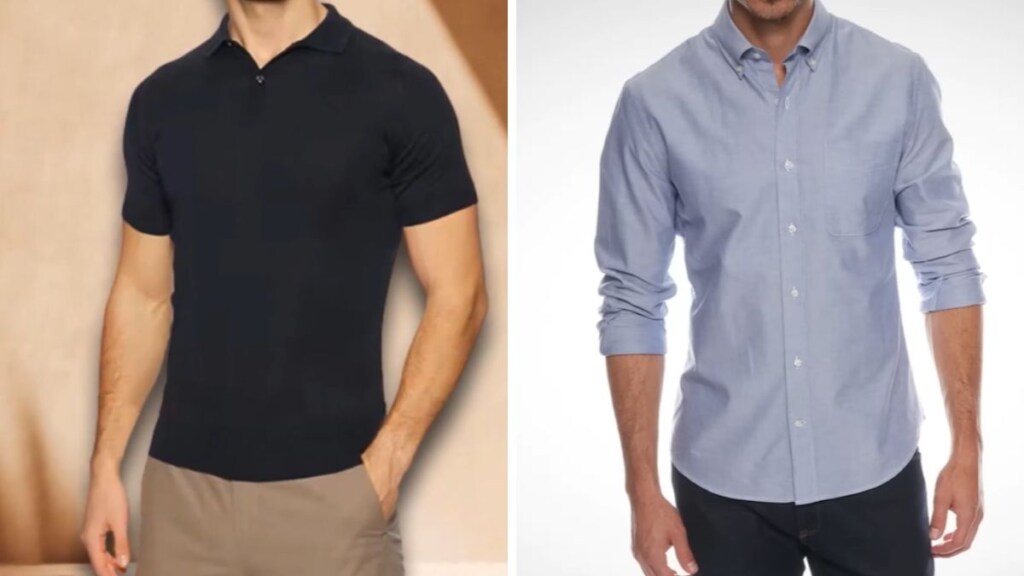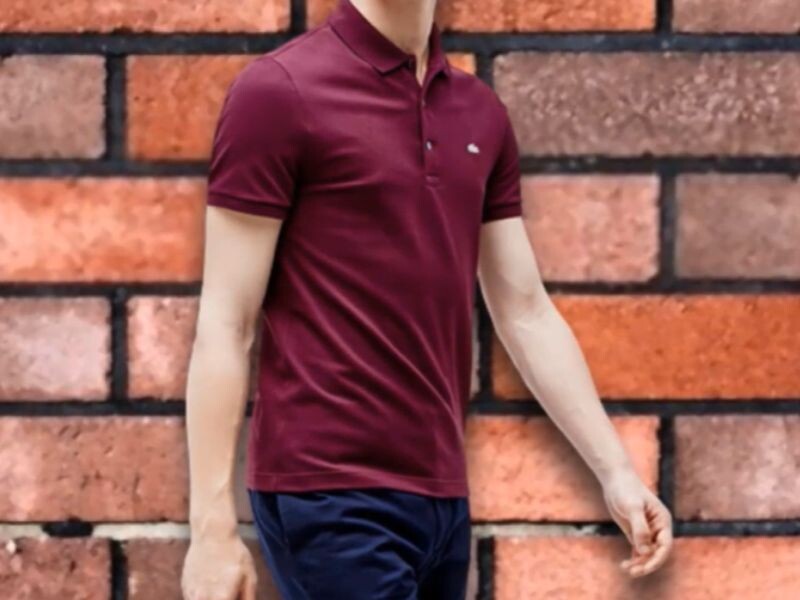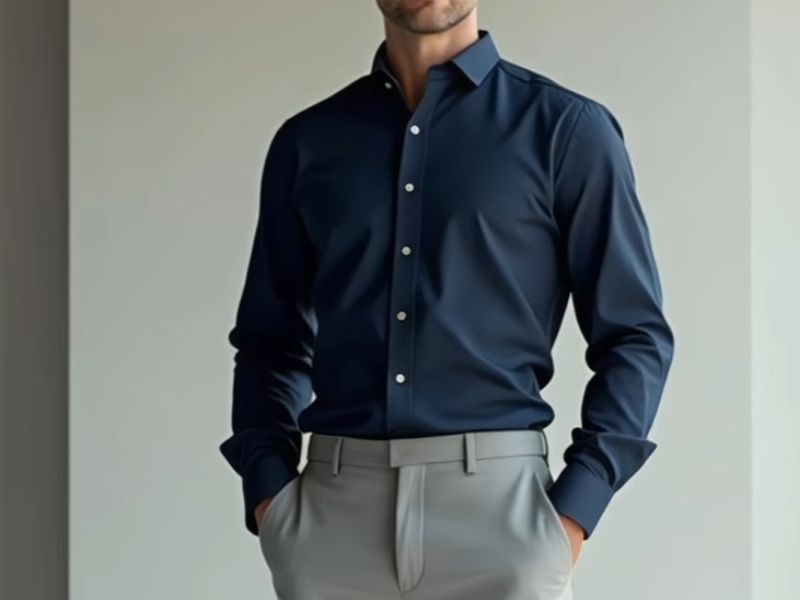
Disclosure: This post may contain affiliate links. We may earn a commission when you buy through links at no extra cost to you.
In a world where first impressions matter, knowing the difference between a polo shirt and a dress shirt can completely transform the way you present yourself. Whether you’re heading to a high-stakes meeting, a weekend brunch, or a summer wedding, choosing the right shirt determines the tone, formality, and style of your look. Understanding the Polo Shirt vs Dress Shirt debate isn’t just about fabric or fit—it’s about mastering the art of dressing with purpose.
What Is a Polo Shirt?

A polo shirt is a timeless staple that perfectly balances casual and smart-casual style. It’s typically crafted from knit fabrics like cotton pique or jersey knit, giving it a soft and flexible texture. Originally created for sports like tennis and polo in the early 20th century, polo shirts are known for their soft collar, short sleeves, and button placket.
Today, polo shirts are an icon of effortless sophistication. They work perfectly for smart-casual Fridays at the office, summer gatherings, and even under lightweight blazers for a modern twist.
Common fabrics include:
- Cotton pique – breathable, textured weave ideal for warm weather.
- Jersey knit – smoother, slightly dressier feel.
- Performance blends – moisture-wicking and quick-drying for active lifestyles.
What Is a Dress Shirt?

A dress shirt represents refined formality. Made from woven fabrics such as cotton broadcloth, twill, or poplin, it features a structured collar, long sleeves, and stiff cuffs. Dress shirts are typically worn tucked in and paired with ties, suits, or blazers, making them essential for business, weddings, and upscale events.
The stiffer fabric and clean lines of a dress shirt give it a polished and professional edge. Depending on the weave and styling, dress shirts can also transition into smart-casual territory when worn without a tie.
Common fabrics include:
- Cotton broadcloth – crisp and smooth, ideal for formal wear.
- Twill – slightly textured with a subtle sheen.
- Poplin – breathable and lightweight, making it great for hot climates.
Collar Shirt vs Polo Shirt – Clearing the Confusion
The term collar shirt is often misunderstood. Technically, any shirt with a collar—including both polos and dress shirts—falls under this category. This overlap leads to confusion, especially for those shopping online or following style guides.
What makes a collar shirt different from a polo shirt?
A polo shirt is a casual knit collar shirt with short sleeves, while a dress shirt is a woven collar shirt typically designed for formal occasions. Both have collars, but their fabric, structure, and formality differ significantly.
Polo Shirt vs Dress Shirt: Key Differences
| Feature | Polo Shirt | Dress Shirt |
|---|---|---|
| Formality | Casual to business casual | Formal to semi-formal |
| Fabric | Knit (pique or jersey) | Woven (poplin, twill, broadcloth) |
| Structure | Soft collar, short sleeves, no cuffs | Stiff collar, long sleeves, structured cuffs |
| Occasions | Golf, weekend wear, casual office | Weddings, interviews, formal settings |
| Layering | Usually worn solo or with light jacket | Worn under suits, blazers, vests |
Which Shirt Should You Choose?
1. Occasion:
- For a formal event or important business meeting, opt for a dress shirt.
- For smart-casual settings or outdoor summer gatherings, a polo shirt keeps you stylish and comfortable.
2. Climate & Season:
- Polo shirts excel in warm climates due to breathable fabrics and short sleeves.
- Dress shirts offer versatility for layering in cooler months.
3. Personal Style & Fit:
- Athletic builds may prefer polos for their flattering drape.
- Dress shirts offer more tailoring options for a sharp, structured silhouette.
Shop trusted collections:
- Uniqlo Polo Collection – affordable, minimalist designs.
- Nordstrom Men’s Dress Shirts – premium quality and fit options.
How to Style Polo and Dress Shirts
Polo Shirt Styling Tips
- Pair with chinos or tailored shorts for a weekend-ready look.
- Layer under a light bomber jacket for modern street style.
- Match with loafers or clean white sneakers for a refined casual finish.
Dress Shirt Styling Tips
- Tuck into slim-fit slacks with a leather belt for an office-ready outfit.
- Finish with a tie and blazer for a sharp, dressed-up outfit.
- Swap the tie for an open collar and roll up sleeves for after-work gatherings.
Transition tip:
Switch from a polo in the day to a dress shirt at night when your plans shift from casual lunches to upscale dinners.
FAQs – Quick Style Answers
Can I wear a polo shirt to work?
Yes, in workplaces with a business casual dress code, polo shirts are appropriate—especially when paired with tailored trousers.
Is a dress shirt considered business casual?
Yes, but it depends on styling. Worn without a tie and with chinos or khakis, it fits into business casual perfectly.
What makes a collared shirt different from a polo shirt
A polo is a type of collared shirt made from knit fabric, whereas most collared shirts (like dress shirts) are woven and more formal.
Can you style a blazer with a polo shirt?
Absolutely. Opt for a solid, slim-fit polo under a tailored blazer for a contemporary smart-casual look.
Wrap-Up
Knowing when to wear a polo shirt vs a dress shirt can make or break your outfit. The key lies in knowing the fabric, the structure, and the occasion. A polo brings relaxed refinement; a dress shirt offers classic formality. Each deserves a spot in your rotation.
Style smart, not just sharp. Consider your lifestyle, environment, and wardrobe goals when choosing between these two essentials. And remember: the most stylish men aren’t rule followers—they’re rule masters.
